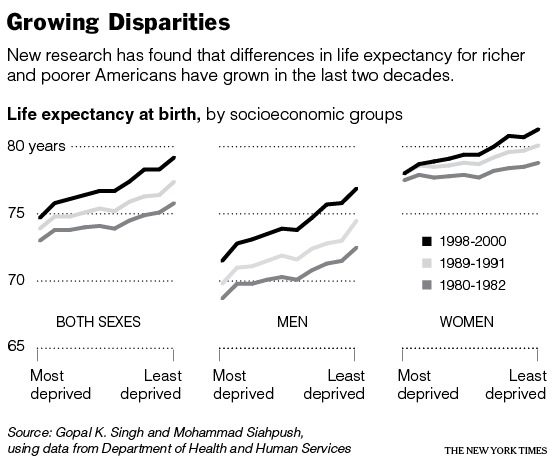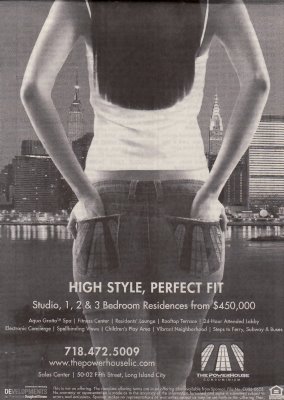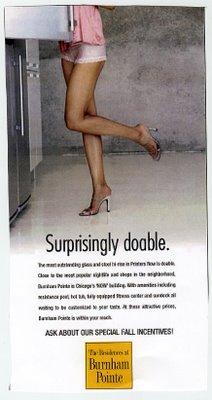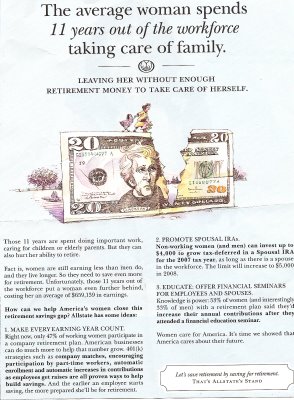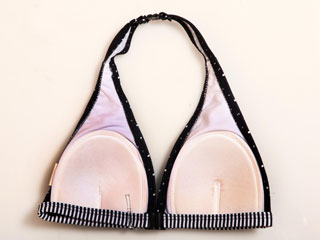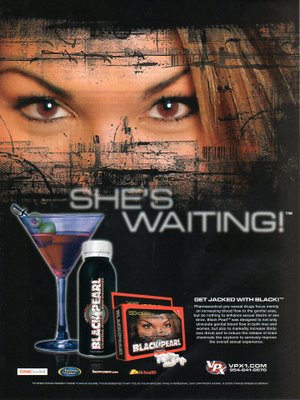Perhaps related to increasing wealth and income inequality in our society, the gap between the life expectancy of the rich and the poor is also increasing. This image is from a New York Times article on the topic:
Dr. Singh, who was part of the study, explains:
In 1980-82… people in the most affluent group could expect to live 2.8 years longer than people in the most deprived group (75.8 versus 73 years). By 1998-2000, the difference in life expectancy had increased to 4.5 years (79.2 versus 74.7 years), and it continues to grow.

